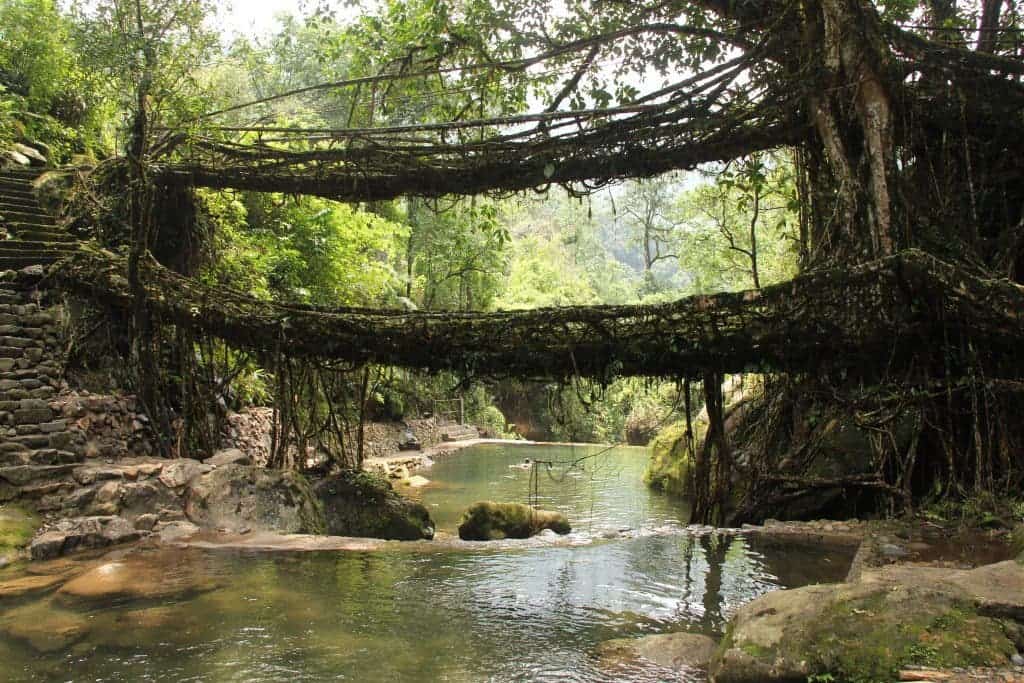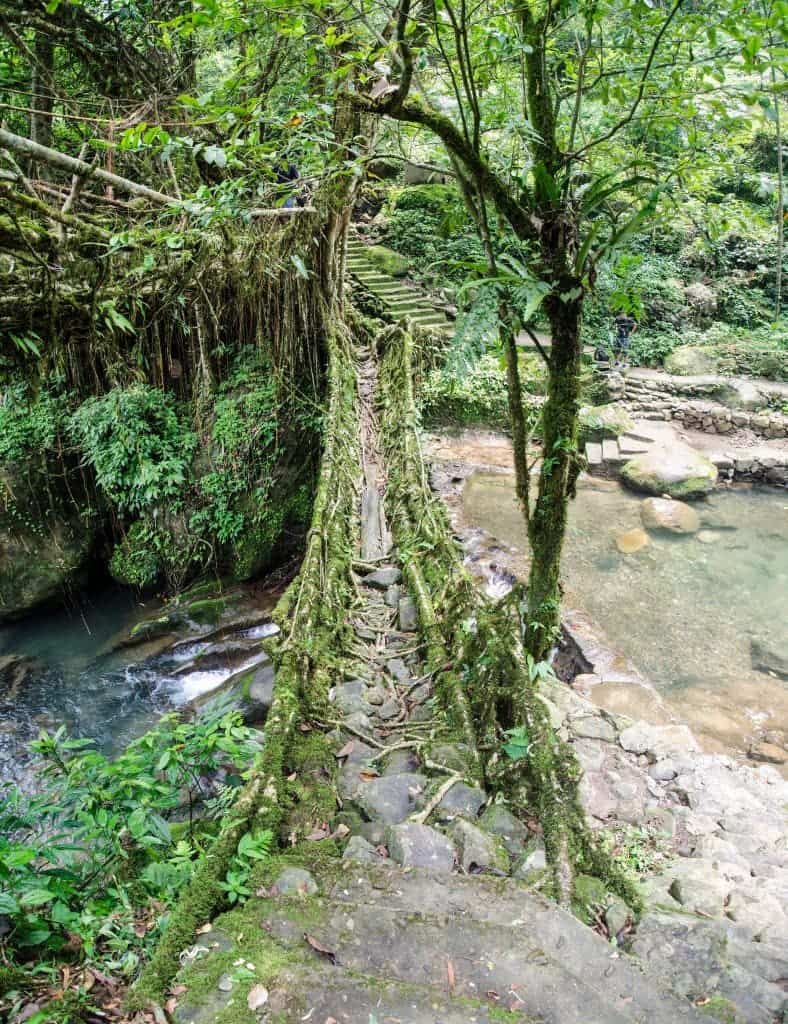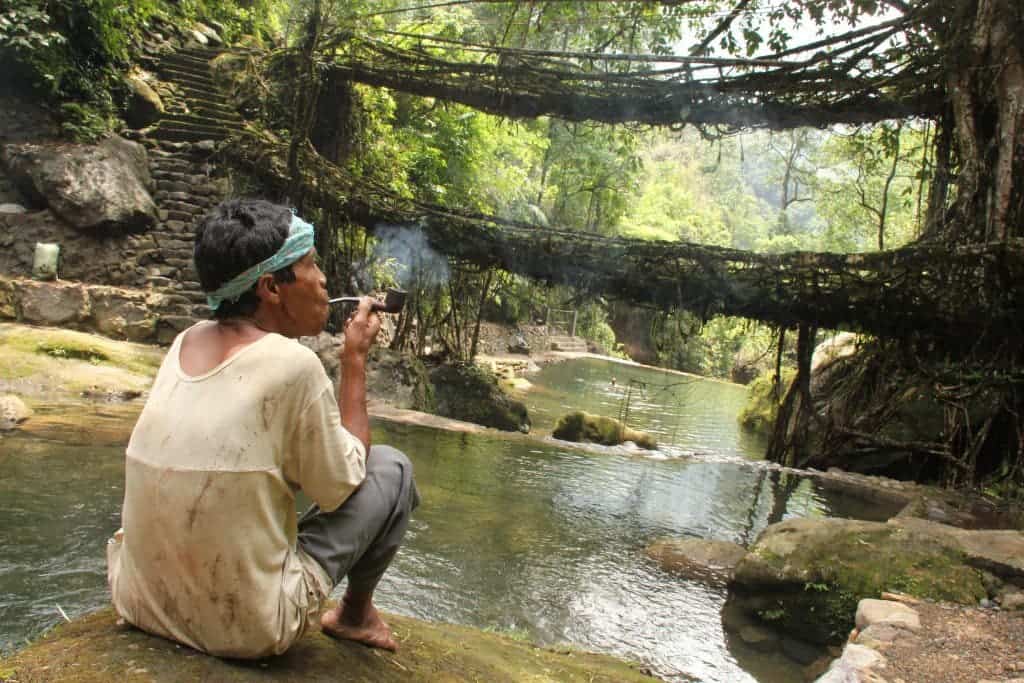In the depths of northeastern India, in one of the wettest places on earth, bridges aren’t built—they’re grown.

India has over 1 billion people, and many of them live in poverty – 21% of all people in India fall below the international poverty line of US$ 1.25 per day. In many parts of the country, especially in the north-east, it always seems to rain, roads are hard to build and are dangerous to ford – it’s one of the wettest places on Earth. The steady precipitation combined with the rugged terrain, steep hillsides and abundant forests make it very difficult to travel from one place to another – crossing rivers is a dangerous adventure. But the inventive, creative people of India found a spectacular solution – though one that requires a lot of patience at first: they “grow” tree root bridges.

It’s not clear who came up with this idea and when, it all started when someone from the Khasi people noticed the way that the trees in the area grew. Growing on boulders on almost sheer cliff faces, laterally above the ground, in very surprising ways. After they secure the way in their primary locale they would extend roots down to the water. At first, the roots are slender and flexible, but in time, they grow to be big and powerful – powerful enough to support dozens of people.
Over time, they gradually “trained” the roots to grow in the direction they want – across the gap until the other side, forming a natural, sturdy bridge. Over time, the Khasi people became better and better at this technique, and they have tree root bridges which even span 30 meters long.
It’s not clear when all this started, but it’s certainly a few centuries old! Some of the biggest bridges are estimated to have been around for 500 years!

But how exactly do you build this kind of root bridges? The first thing you need is roots which exhibit a similar root behavior, like the Indian Banyan (Ficus benghalensis) and the Rubber Tree (Ficus elastica). But how do you make them grow the way you want? The key here is another plant – the betel nut. The betel nut is a shrub; the Khasis take a trunk and slice it, hollowing out the middle – like a tube. I’m not sure if there is something specific about this plant, you could probably use a number of other solutions, but it’s just something suitable that grows a lot in the area. They then take this hollowed trunk and use it as a guidance system for the roots. Once the roots reach the end of one of these guides, you simply add another one at the end. Since there’s a lot of rain, the roots grow a lot, searching for some place to grow in the ground. After they reach the other side of the river they take root there, establishing the natural bridge.
Of course, all of this takes a lot of time – you have to wait for the trees to grow. It usually takes somewhere between 10 and 20 years for the bridge to take shape, but once it’s built, it really lasts a lot, several centuries, and it’s secure – they can usually hold at least a dozen people. Depending on the tree, the conditions, and the size of the desired bridge the time frame can vary (faster than 10 years or slower than 20), but usually, it takes just over a decade.
The solution is also sustainable, eco-friendly, and doesn’t cost any money – so truly an ideal solution for this area. One special root bridge, believed to be the only one of its kind in the world, is actually two bridges stacked one over the other and has come to be known as the “Umshiang Double-Decker Root Bridge”, which you can see both above and below.
The trees are incredibly useful. Crossing a river without the bridge is somewhere between very unpleasant and dangerous (potentially even life threatening in the rainy season). Many children have to walk great distances to get to school, and without these bridges, it would be impossible for them. The utility of this technique is undeniable.
Now, as Western Civilization starts to discover these bridges, they also have a potentially touristic value. The local population which already favors them to modern bridges has been alerted to their potential worth and kept them from being destroyed in favor of steel ones.
The Indian state of Meghalaya, where most of these trees can be found, is one of the poorest, but most beautiful places on Earth – “Meghalaya” literally translates as “abode in the clouds.” It’s a remarkable place, with remarkable people – it’s where human ingenuity meets the implacable forces of nature.
So now, I ask you: is growing tree root bridges a science, or an art?






